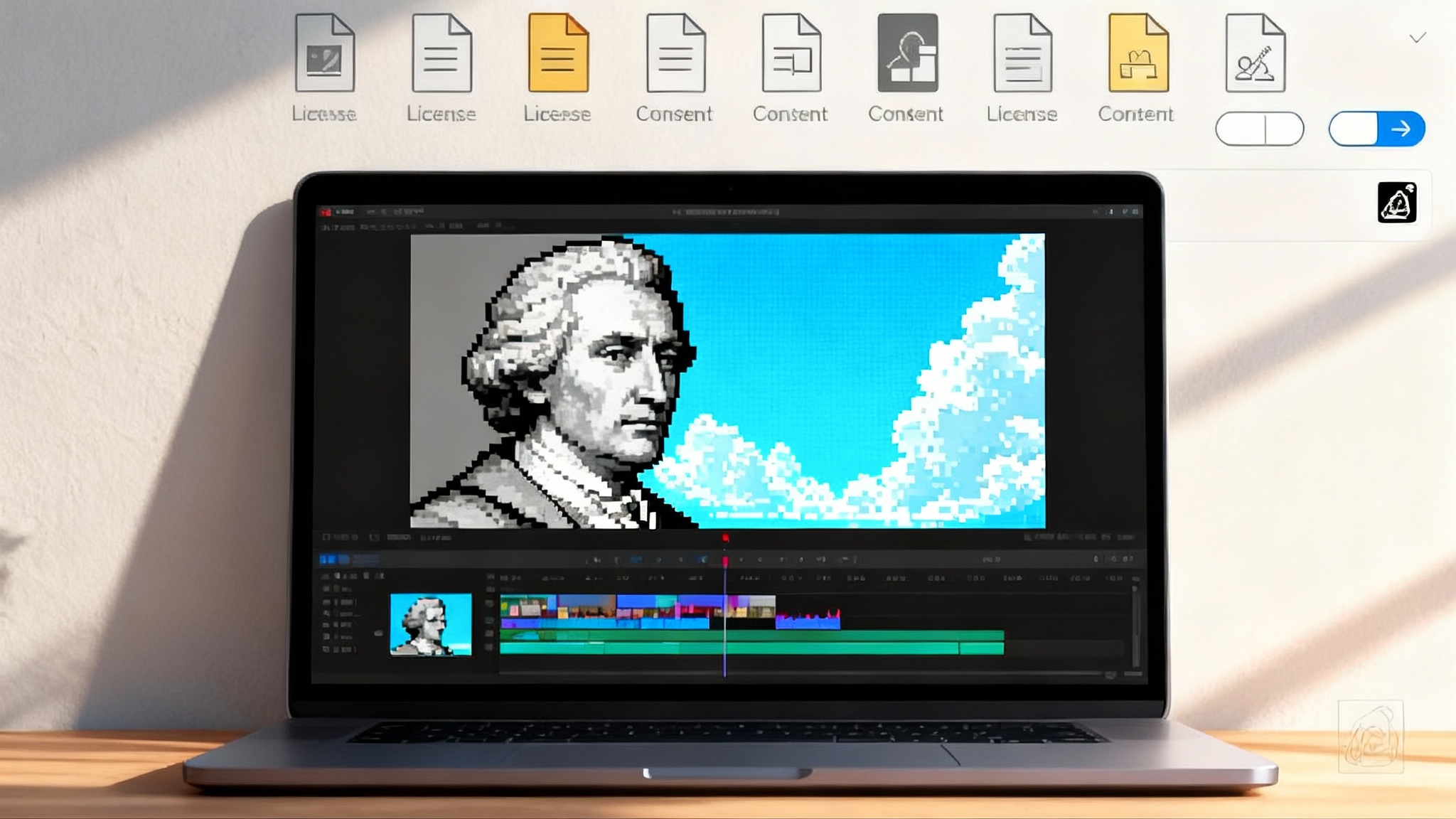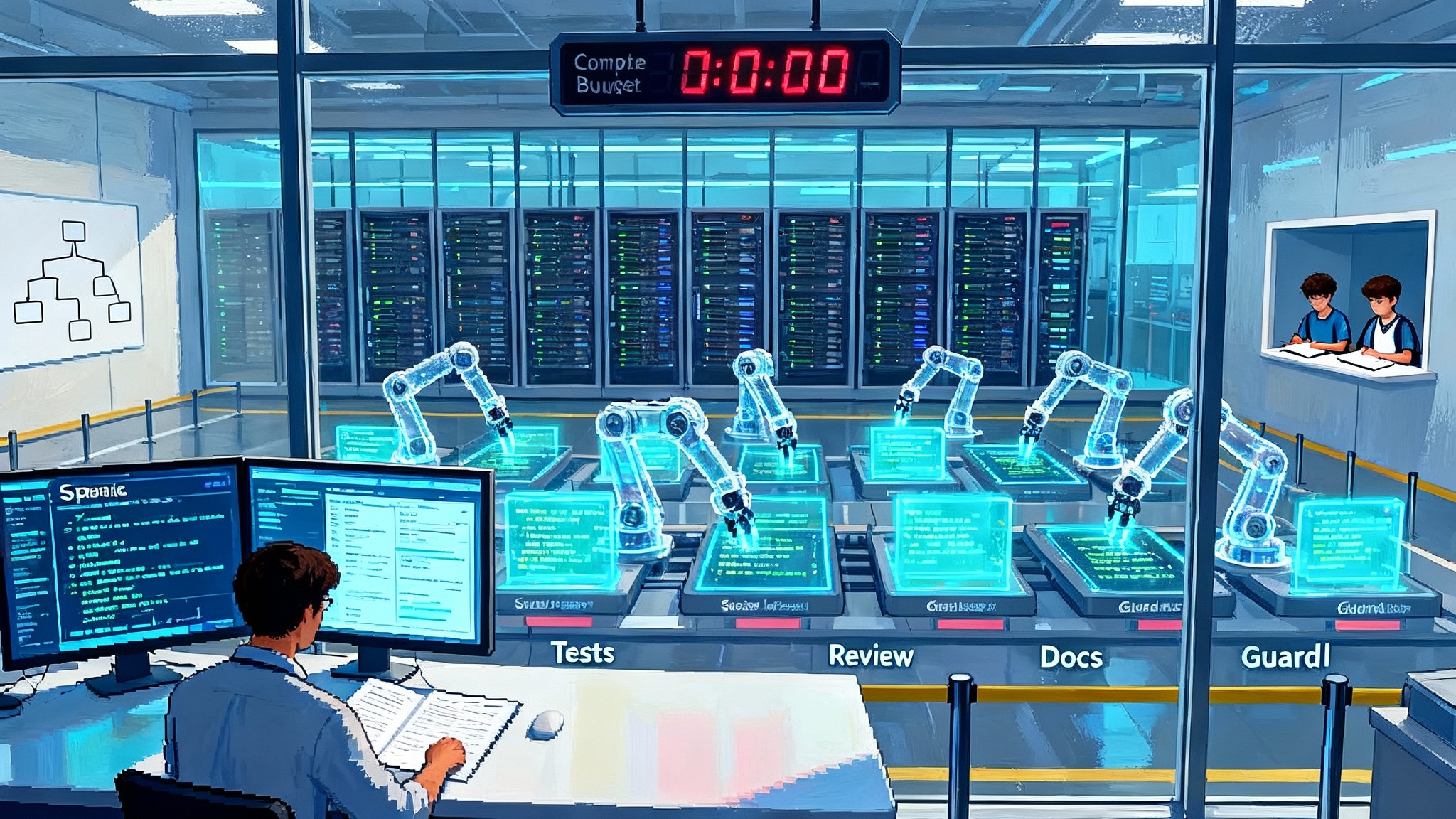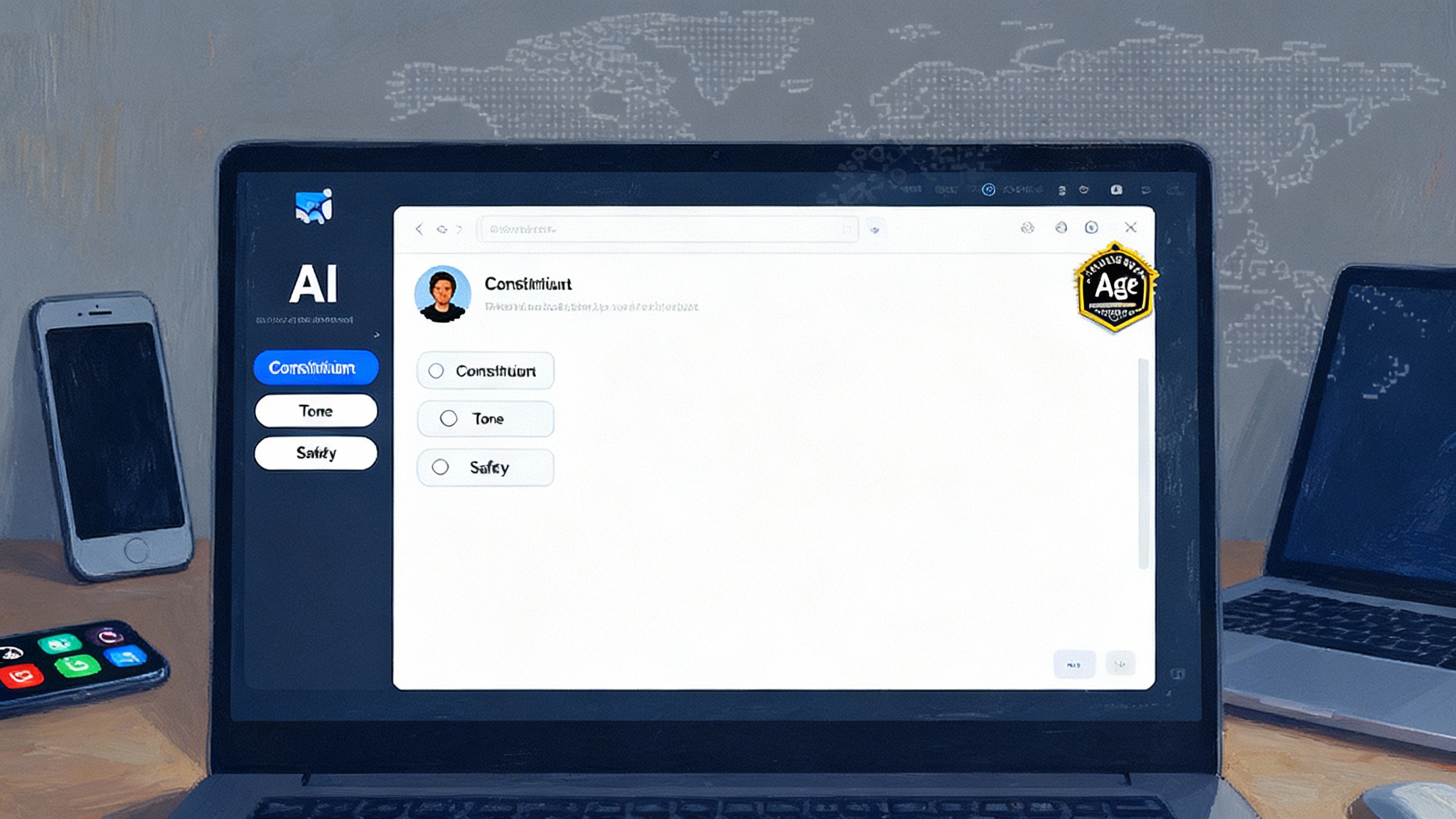Editable Afterlife: Who Owns the Dead in the Age of AI
Generative video has turned cultural memory into a writable medium. As realistic tools collide with grieving families and patchwork laws, we need consent registries, estate APIs and strong provenance so remixing the dead grows art without erasing dignity.

The week cultural memory went editable
In late September, a new generation of consumer video models moved from demos to everyday devices. OpenAI's Sora line arrived with longer clips, storyboard tools, and a public pledge to watermark outputs and gate likeness use through verified cameos. The company describes visible marks and industry metadata, and says the system is designed to block depictions of public figures unless the person has opted in. You can read its framing on OpenAI's Sora responsibility page.
That was the breakthrough. The backlash came instantly. Families and estates of famous figures objected to AI videos that treated the past like a sandbox. Some were playful, others crass. The common thread was a new fact of life: cultural memory is now a writable medium. Anyone with a prompt and a spare afternoon can draft the dead into a scene.
This is not niche anymore. Tools from startups and incumbents now stitch faces across frames, hold camera grammar through cuts, and keep character identity consistent for dozens of seconds. An editor can feed a still photo of a grandparent into a tool that invents a short film from it. A creator can storyboard a classroom visit from a long gone inventor. As realism gets cheaper, taste and law collide. The result looks less like a single scandal and more like a durable feature of the media landscape.
The question is not whether culture will remix the dead. It already does. The question is who decides how, when, and on what terms.
Why ownership got murky overnight
For a century, the law split a person into parts. There is the body. There is speech. There is a likeness that can be licensed for posters and perfume ads. There is a reputation that defamation law protects. Death used to simplify things. Estates handled royalties, and reputations were policed by norms. What generative media did was dissolve the practical friction that made many bad ideas too hard or too expensive to try. Now the barrier to entry is a prompt.
Three forces are converging:
-
Ubiquitous synthesis. Video models can fabricate a person who looks and moves like someone we remember. Voice models can match timbre and cadence from seconds of audio. The result is a convincing performance without the performer.
-
Platform velocity. Distribution is instant. A clip can gather millions of views before a family or estate even learns it exists. Takedowns, even when successful, come after the cultural moment has already passed.
-
Patchwork rights. Posthumous rights to a person’s image or voice vary widely by state and country. Some states treat name, image, and voice as property that survives death for decades. Others barely mention voice at all. Tennessee moved early to make voice cloning a core part of publicity rights with the statewide ELVIS Act. The Governor’s office describes the law in Tennessee's ELVIS Act notice, underscoring that voice, not only image, is now protected.
These forces create a gap between capability and consent. In that gap, culture improvises. Teachers run AI guest lectures by historical figures. Advertisers test the boundaries of posthumous endorsements. Fans make tribute videos that feel loving to some and ghoulish to others. Estates watch the flood and call lawyers. Platforms toggle new safety switches. The pattern is familiar to anyone who lived through file sharing or the rise of creator economies. But the stakes feel higher, because the thing being copied looks alive.
Person, property, performance
To make progress, it helps to name the conflict correctly. Generative media fused three different things into one object: a personhood that commands dignity, a property interest that can be licensed, and a performance that can be remixed. When a model conjures a vivid clip of a deceased scientist explaining her breakthrough, all three show up at once.
Treating the result only as property fails at dignity. Treating it only as personhood freezes culture. Treating it only as a performance ignores that a real family carries the name being repurposed. The practical answer is a layered system that respects dignity, prices property, and enables performance with traceable provenance.
Build the afterlife infrastructure
Blanket bans will neither hold nor help. The public appetite for impossible footage is real, and the educational upside is too large to ignore. The right move is to build an infrastructure where remixing the dead can grow art and learning without flattening history or humiliating families. Here is what that infrastructure should include.
1) Posthumous consent registries
We already manage organ donation with simple forms on driver’s licenses. We can do the same for digital remains. A posthumous consent registry would let people specify what forms of posthumous use they allow. Examples:
- Educational use only, with no commercial sponsors.
- Documentary and news exceptions with attribution.
- No political messaging and no intimate content.
- Voice allowed, video not allowed, or the reverse.
- A designated agent who can update terms or revoke consent.
Make it machine readable. When a user types a name into a video model, the system checks the registry. If the person opted in, it loads the terms. If the person opted out, the model must refuse. If no record exists, the model applies a default: historical figures in the public domain are allowed within guardrails, recent deaths trigger a cooling off period, and private individuals are blocked by default.
Registries are only as strong as their adoption, so pair them with incentives. Platforms could prioritize and promote content that carries a verified consent record. Estates could receive automatic payouts. Creators would get faster distribution when they stay inside the lines. This is a concrete way to prepare for a future where the licensed web is coming.
2) Estate APIs for likeness licensing
API stands for application programming interface, a doorway software uses to talk to other software. Estates should have one. Call it the Likeness API. A creator or platform sends a standard request: person, purpose, duration, territory, output channels, and whether the clip will run ads. The estate replies with terms and a price, automatically. The license travels with the file as metadata. When a platform ingests the clip, it can check the license, confirm payment, and annotate the upload with a visible badge that viewers can tap to see who approved the use.
This does three things immediately. It reduces email ping pong between creators and lawyers. It democratizes access, because you do not need a studio deal to request a legitimate license. And it lowers the temperature of the debate, because there is an obvious path to ask for permission and to pay respectfully.
The Likeness API should offer tiered pricing. Educational and memorial uses could be free or near free with required attribution and contextual framing. Commercial uses would carry clear rates, set by the estate or by a collective management organization. Think of it as a familiar sync license, but for people, not only music.
3) Provenance, visible and invisible
Provenance is a chain of custody. With synthetic media, provenance has to be embedded. Use two kinds of marks together.
-
Visible marks. A tasteful on screen icon and a short line of text such as "AI recreation approved by the X estate on Y date" or "AI recreation with no estate approval on record." The wording matters. It sets norms for attribution and accountability.
-
Invisible marks. Embed standardized metadata that records the model version, the prompt structure, and the license hash. The industry is coalescing around the C2PA family of standards. These signals should be portable across tools and should survive simple edits like cropping or color correction.
Regulation can help. Require platforms above a certain size to preserve provenance on upload and to make it visible on demand. Make evasion expensive by throttling the reach of videos that strip provenance without a legitimate reason. This is the kind of public rail that complements public AI infrastructure.
4) Model level mourning periods
Most ugly incidents share timing, not only content. A sudden death turns into a feed of synthetic tributes and jokes within hours. A model level mourning period can prevent the worst outcomes by default.
Here is a concrete policy: for the first ninety days after someone dies, models refuse to generate that person unless the registry shows prior consent or a designated agent approves. After ninety days, generation is allowed for news, scholarship, and education with visible provenance, but commercial uses still require a license. Exceptions would be reviewed by a small cross platform panel that includes archivists, ethicists, and representatives from creator groups.
The benefit is not only sensitivity. It also reduces legal and reputational risk for platforms and creators, because the hottest window for mistakes is when emotions are raw and facts are unsettled.
5) Dignity guardrails you can implement
Vague rules are hard to enforce. Spell out the red lines in code and policy.
- No sexual content involving the deceased unless the registry explicitly allows it.
- No political endorsements from the deceased unless allowed by the registry and clearly labeled as such.
- No synthetic confessions or fabricated crimes attributed to the deceased.
- Escalation requirements for minors, victims of recent tragedies, and public health figures where misinformation risk is high.
These are not abstract ideals. They are toggles developers can ship, trust and safety teams can audit, and creators can understand. They align with the transparency culture taking hold in an aviation style safety era.
6) Receipts, not vibes
Every synthetic recreation should ship with a receipt: when it was made, by whom, using what model and version, and under what license. Creators already live in a world of content identification and music matching. Bring that clarity to faces and voices. Make the receipts easy to view, and easy to challenge if something seems off.
Receipts help historians and journalists too. Fifty years from now, someone will comb our era for the first convincing AI films of iconic figures. Receipts make that work possible without guesswork.
7) A public domain afterlife that is structured, not chaotic
Remixing long dead figures can be wildly educational. Museums and archives should curate model packs for historical figures whose rights have expired. Each pack would contain vetted audio, images, and writings, alongside guardrails that keep the outputs anchored to the record. Educators could use these packs to stage debates and explain counterfactual thinking, while tools flag clear departures from the historical record as dramatization.
That last part matters. History classes need students to know when they are watching dramatization. Clear visual and textual signals prevent the slide from history lesson to plausible fan fiction.
What different players should do next quarter
A call to build is only useful if it reads like a checklist. Here is one.
-
Model developers
- Add a default ninety day no generation window for newly deceased persons that checks a shared death record feed.
- Integrate a mandatory registry lookup before rendering a named person, with clear error messages when consent is missing.
- Ship visible marks by default, and embed metadata that includes license status and a pointer to the registry record.
-
Platforms
- Require provenance to be intact for uploads that depict real people. Flag and throttle reach for clips that strip it.
- Offer a prominent "Why am I seeing this face" button that reveals license and consent status.
- Join a cross industry afterlife safety board and publish quarterly enforcement stats for synthetic depictions of real people.
-
Estates and creator unions
- Stand up a Likeness API with tiered pricing and automatic small value licenses for education.
- Publish style and context guidelines that clarify what feels respectful versus exploitative, then codify them in machine readable terms.
- Pilot rapid response review panels for urgent requests tied to documentaries, news, or memorial events.
-
Lawmakers
- Harmonize state publicity rights to include voice, clarify posthumous duration, and preempt conflicts that reward venue shopping.
- Create a safe harbor for news, parody, and scholarship that meet provenance and labeling requirements.
- Fund an independent provenance lab that stress tests watermarks and issues public reports.
-
Educators and cultural institutions
- Develop classroom rubrics for synthetic history assignments that require receipts and citations.
- Commission open model packs for public domain figures and publish lesson plans that show how to teach with them.
The hard cases you cannot dodge
There will be edge cases. A satirist drags a long dead ruler into a modern debate. A documentary maker wants a deceased scientist to read her journal entries on screen. A small town uses a synthetic version of a local hero to sell tickets to a centennial festival. The registry might allow some uses and deny others. The Likeness API might quote a price a teacher cannot afford.
The answer is not to pretend the medium can be cleanly separated from the messy contexts where it lands. The answer is to treat each hard case as a design opportunity.
- Satire. Allow it with obvious on screen satire marks, provenance intact, and searchable receipts. If a platform carries satire, it should carry the labels too.
- Documentary. Require verbatim sourcing for any synthetic narration that implies the subject said those words. If not verbatim, label it as dramatization on screen, not only in the credits.
- Local commemorations. Enable time boxed community licenses at very low rates with simple self serve terms that expire shortly after the event.
These are specific. They are testable. They can be argued, revised, and shipped.
Why this is acceleration with guardrails, not a veto
Slowing the medium to a crawl would deny us real gifts. A synthetic film that lets students see Rosalind Franklin explain X ray diffraction could change how a teenager views science. A short of Miles Davis discussing improvisation could open a musician’s ear. Families could preserve the cadence of a beloved relative for private memorials that do not need a studio or a budget.
Acceleration with guardrails is not a slogan. It is a workload. It asks companies to ship registry checks, estates to stand up APIs, platforms to preserve provenance, and lawmakers to harmonize inconsistent rules. It asks creators to choose the licensed path when it exists, and to accept that some uses are off limits when a person said no.
What dignity looks like on screen
Dignity is not only the absence of humiliation. It is also the presence of context. When a synthetic clip of a historical figure plays, add on screen breadcrumbs that lead viewers to primary sources. If a deceased performer endorses a product, say who approved the deal and how long the license lasts. If a viral remix changes the record for a laugh, make the joke clear and the edit obvious.
Nothing about that diminishes creativity. It strengthens it, because the audience can tell craft from counterfeit and homage from theft. The viewers who want to learn more can follow the breadcrumbs. The ones who want to enjoy the moment can do that too, without being tricked into thinking the dead have logged back in.
The line between reverence and revisionism
Whenever a new medium arrives, we get both masterpieces and scams. Photography produced both documentary truth and staged propaganda. Sampling gave us generational albums and lazy copies. Generative video will be the same. The line we are drawing is simple: respect the person, price the property, prove the provenance.
Build the registry. Ship the Likeness API. Mark the outputs. Give the newly dead a grace period. Teach with curated model packs. Measure what is working. Fix what is not.
Cultural memory is now editable. That is not a disaster. It is a responsibility. If we build the afterlife infrastructure, the living can learn from the dead without rewriting them into something they never were. And the past can speak in new ways, without being drafted into a future it did not choose.








